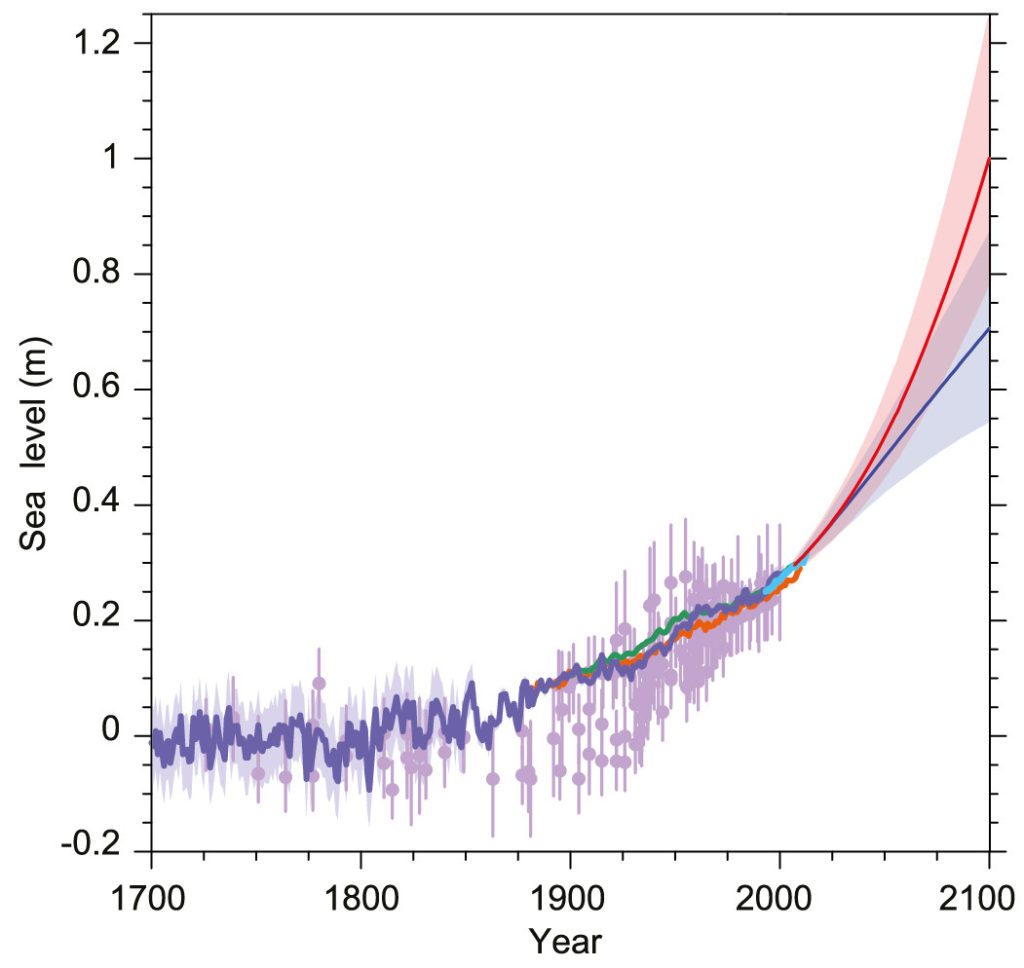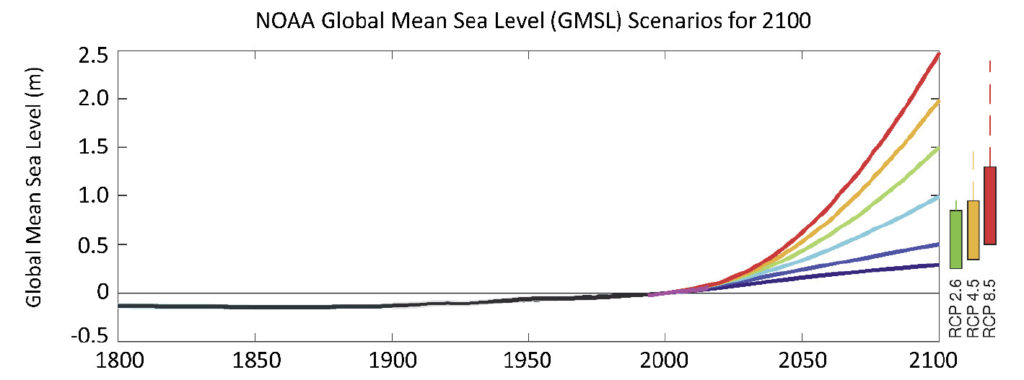This is an enormously complex subject. The expected behaviour of ice sheets in response to increased atmospheric temperatures is inevitably imperfectly understood; modelling of future temperatures over Greenland and the Antarctic is also far from perfect; there is huge variability in expected emissions pathways; and much more.
These are all issues far too involved to consider in detail here. For those interested a more in-depth and readable summary of recent research is available from Carbonbrief here, with copious links to the original research.
The nearest thing to a gold standard in forecasting is the work of the IPCC, which produces periodic reports updating a comprehensive overview of published science. The most relevant is that of Working Group 1 (WG1) in the Synthesis Report of the 5th Assessment report (AR5) in 2013 – whose summary graph is shown below.

The graph indicates a range of possible rises between about half a meter and over one meter, depending primarily on emissions pathways for the rest of the century. The text of the report states that ‘it is virtually certain that sea level will continue to rise during the 21st century and beyond’.
IPCC publications are the result of a ponderous and somewhat political and therefore conservative process. From their nature they also tend, in cases where research on the subject is fairly fast moving, to be out of date. So it is appropriate to look at alternative sources.
First, a more recent (2017) study by NOAA, the authoritative National Oceanic & Atmospheric Administration in the USA. It again takes a scenario approach, with 2100 outcomes ranging up to two and a half meters.

These and many more studies understandably take refuge in scenarios, while acknowledging a certain level of absolutely inevitable sea level rise due to the warming that has already taken place, and the ice-melting and thermal expansion that must inevitably result. Another approach is known as Expert Assessment. Here is Stefan Rahmstorf from the equally authoritative Potsdam Institute for Climate Impact Research (PIK), giving a very measured outline of research from PIK in May 2020.
The Carbonbrief review mentioned above takes a variant on the Expert Assessment approach, looking at 'Estimates of sea level rise by 2100 under very-high emissions scenarios, published between 1983 and 2018. Dots represent the best estimate, while bars represent the high and low-end estimates (when available). Black lines indicate IPCC report values, and the grey region extends those values forward until the next IPCC report'. The figure is based on data from Garner et al 2018;
All these studies are very well, but they are not the best possible help for people who want to know what to do - how to think about the future? And what is so magical about 2100 anyway? Why not 2078, or 2136? These dates mostly concern our children, or theirs (or theirs); it's hard to see the difference....
The answer must lie in 'taking a view'. It seems clear that a 1m sea level rise in less than a century is very possible; 2 meters is far from being out of the question. For its part, the Environment Agency has taken a bold stance: As a nation, we need to be prepared for a 2°C rise in global temperatures, but plan for a 4°C rise , which would undoubtedly lead to more than 1 meter rise. It remains to be seen whether it will have the funding to match that ambition.
And the crux of the issue is the impact; what are the implications for people living on the UK coast? Our current best shot at exploring this is here.




